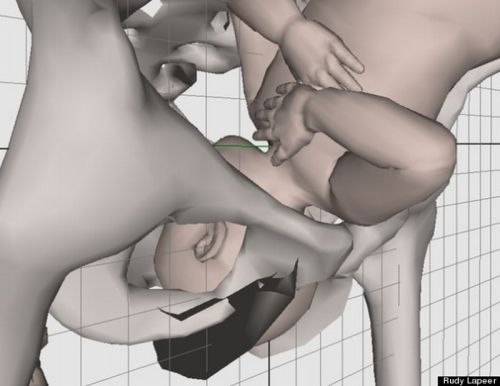Taking an innovative approach towards predicting the birth event during laboring, researchers at the University of East Anglia have come up with a patient-specific 3D virtual birth simulator. With an aim of assisting doctors and midwives, the simulator prepares them in case of complications at the time of births. The program takes into account the mother’s body shape and position of the baby to reach to proximity of what might take place during the birth event.
Dr Rudy Lapeer, one of the lead author from the university’s school of computing sciences, said,
We are creating a forward-engineered simulation of childbirth using 3D graphics to simulate the sequence of movements as a baby descends through the pelvis during labor.
After taking the specific anatomical inputs like size and shape of the pelvis, the baby’s head and torso, the simulation software then creates 3D graphics of geometric model of a baby’s skull and body along with mother’s body and pelvis. This graphical representation helps the medical team to get into the depths of possibilities that might arise during the childbirth. For instance, it might predict whether the baby’s shoulder could get stuck or not, force from the mother while pushing the baby down, they are also aiming towards creating a virtual midwife’s hands for interacting with the baby’s head, probabilities which were not possible to predict with the conventional systems.
Adding further Lapeer said,
We hope that this could help to avoid complicated births altogether by guiding people in the medical profession to advise on caesarean sections where necessary.
The research is definitely a pioneer in terms of medical visualization and simulation in medical field. And with this coming into the forefront, caesarean might get averted which otherwise has been the only option arise due to complications in birth event.




